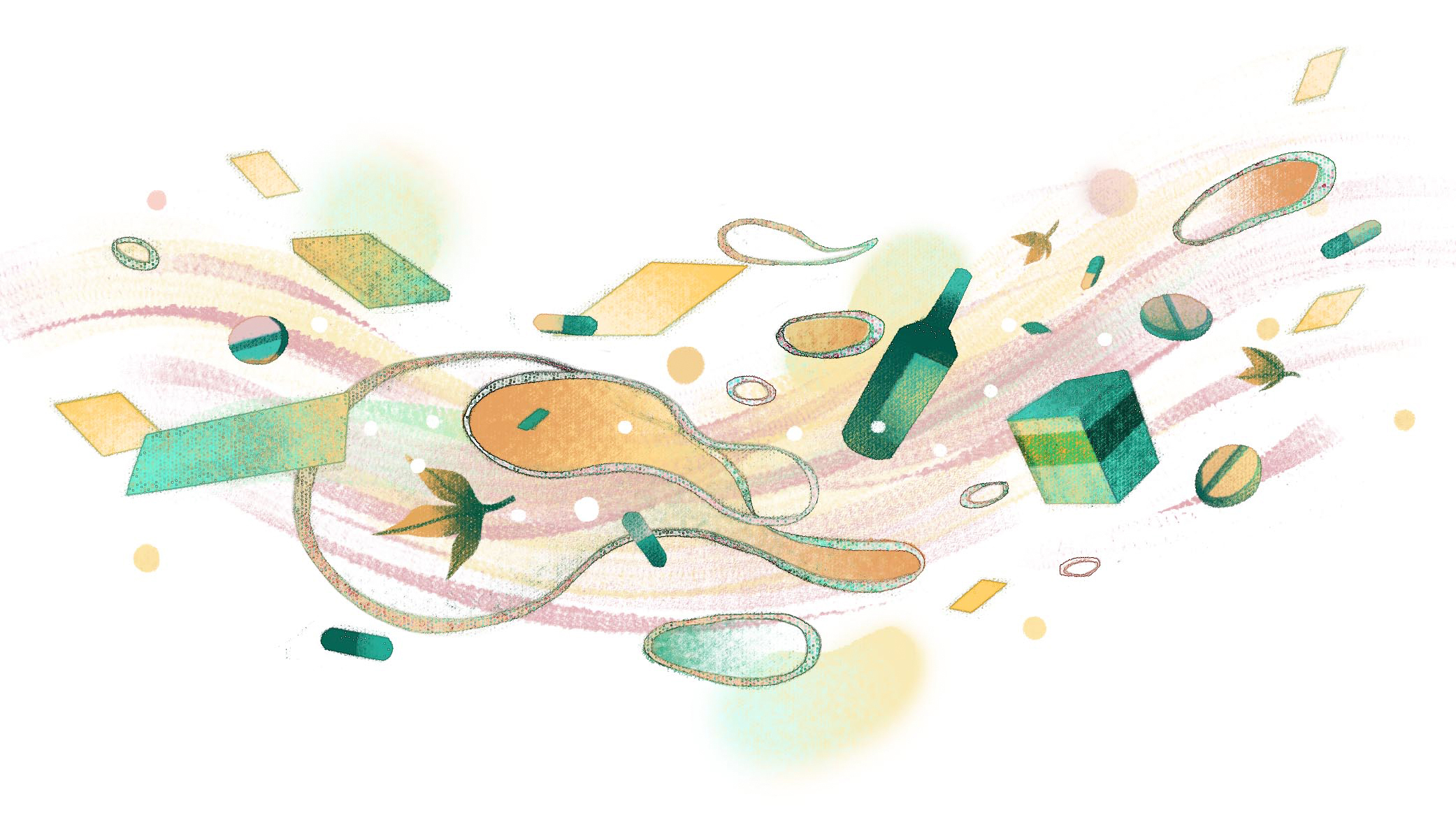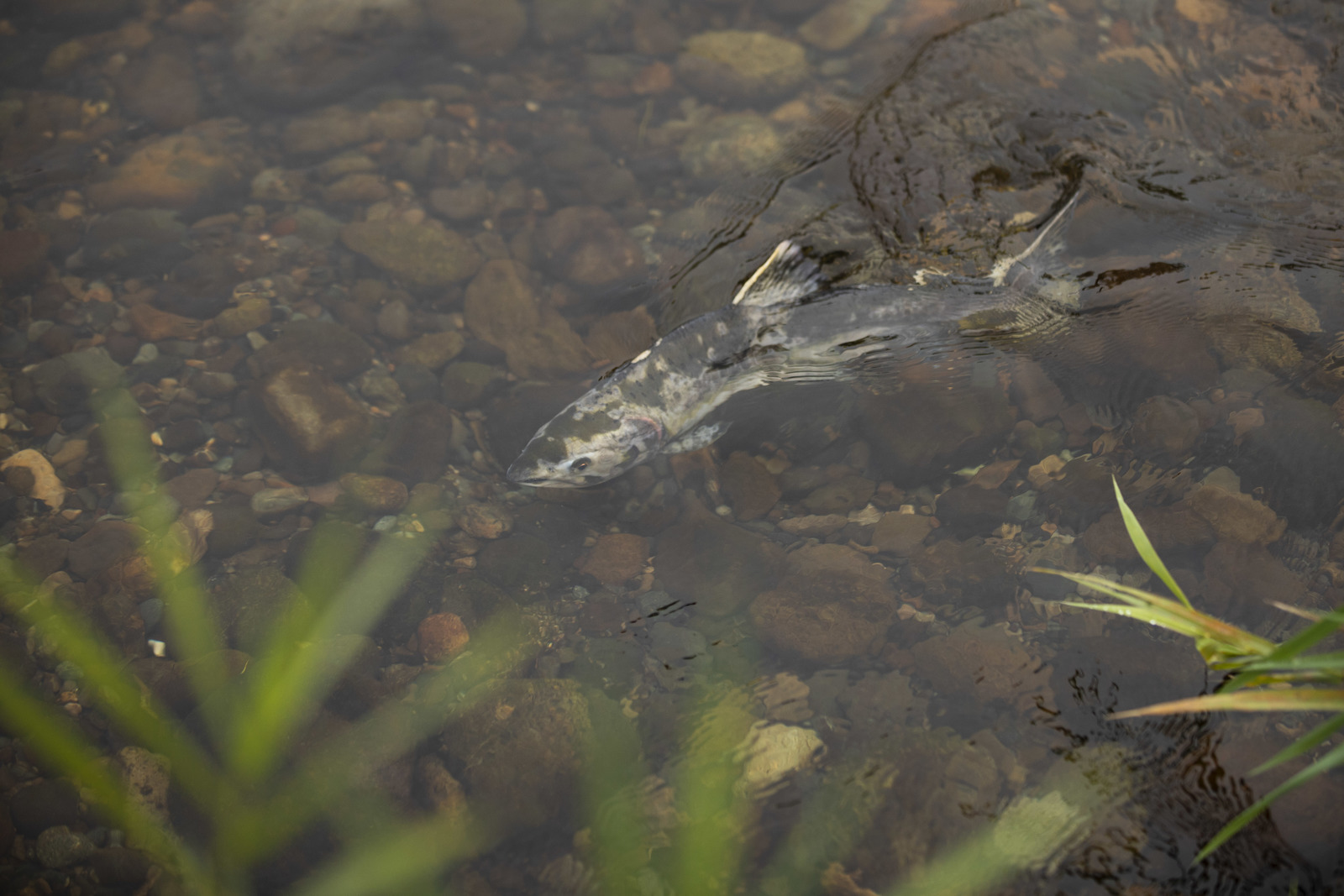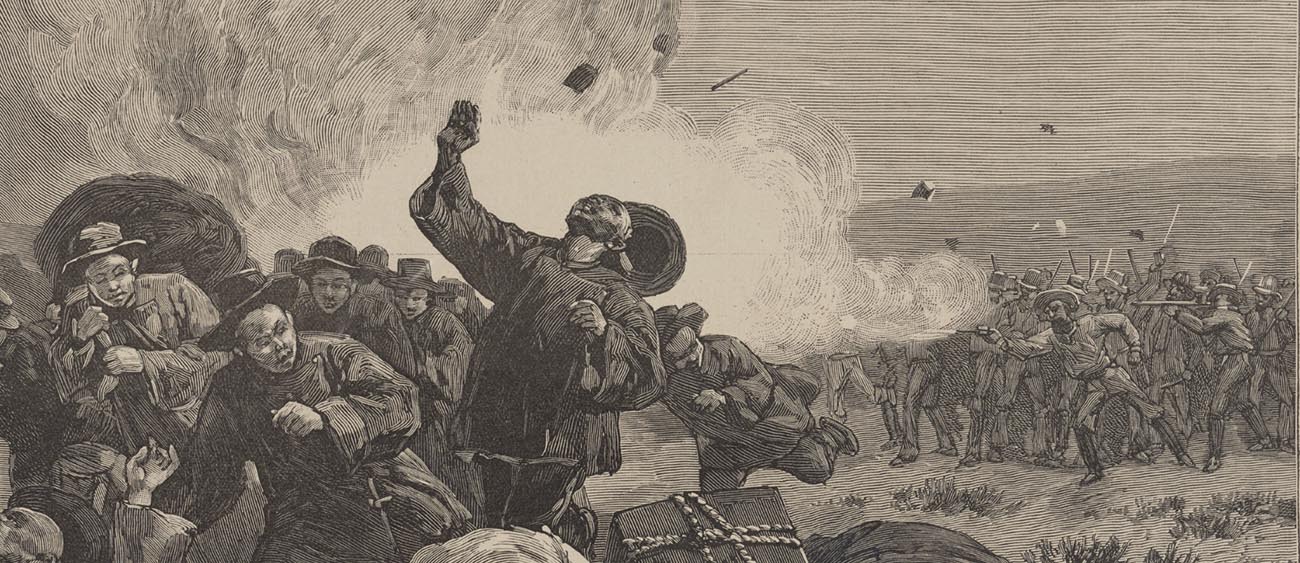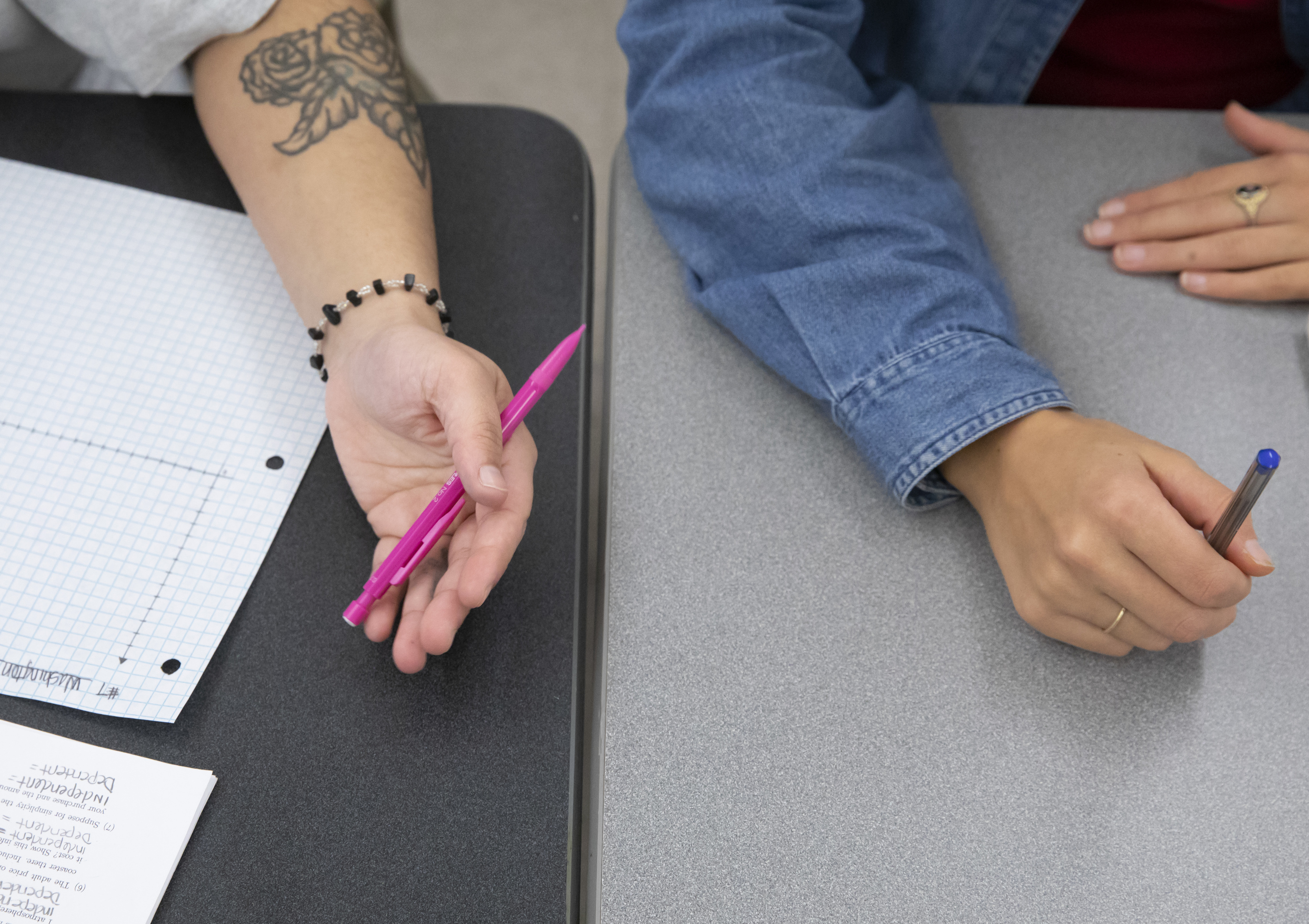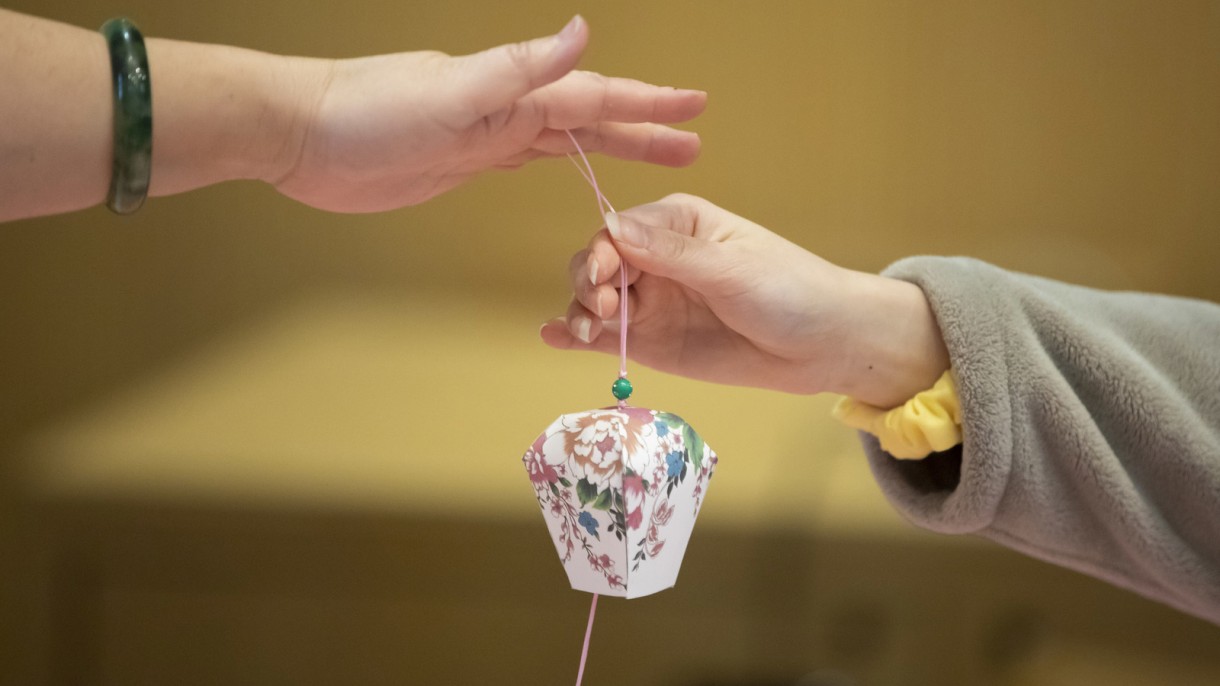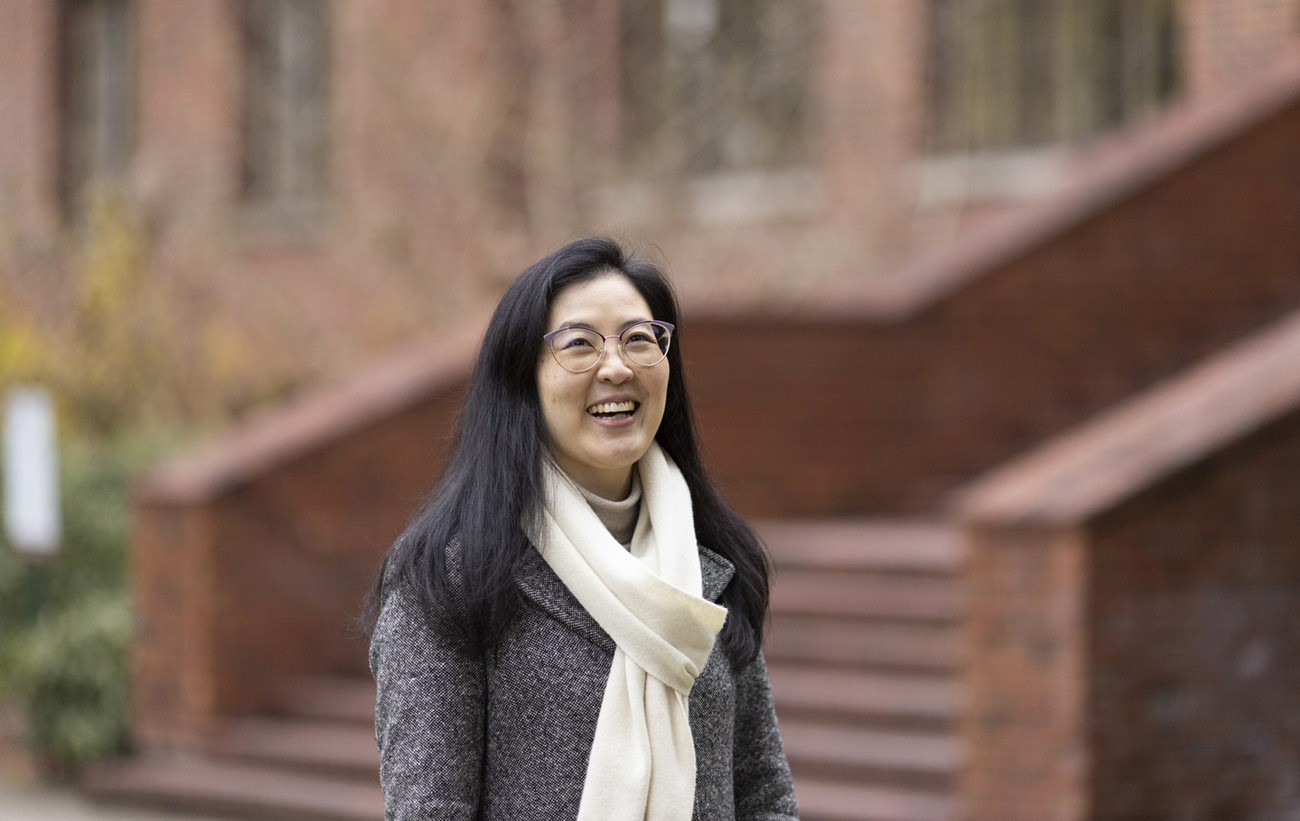Chemist Dan Burgard is at the forefront of an exciting—and stinky—field: wastewater analysis
Beneath our streets lies a data network so powerful it can pinpoint the emergence of a new synthetic drug, inform disaster response to crises such as wildfires and flooding, and even serve as an early warning system for the presence of the novel coronavirus. The network? Our public sewer system. Sewers move about 34 billion gallons of wastewater each year, and they contain a near-endless sea of data that scientists are just beginning to navigate.
Puget Sound chemist Dan Burgard found his way into the field of wastewater analysis about a decade ago by way of a ferry ride from Vashon Island, where he and a student, Jake Berenbeim ’09, had been testing school bus emissions for pollutants. Burgard recalls that as the ferry chugged away from the island, he and Berenbeim were talking about an upcoming exam, and he asked Berenbeim about academic cheating. “What really bothers me,” Burgard remembers Berenbeim saying, “is that everyone is on Adderall.” Burgard was incredulous. How could everyone be using the prescription amphetamine Adderall? he remembers thinking. But at the time, there was a lot of media attention on the extensive use of stimulants—“study drugs,” they’re often called—on college campuses nationwide.
Burgard had just read a paper by a group of Italian researchers who, using wastewater, had discovered that the prevalence of cocaine use in that country was vastly higher than official national estimates. It occurred to him that wastewater analysis could be an objective measure to assess stimulant use on campus. During the 2011–12 academic year, Burgard teamed up with a colleague, psychology professor David Moore, to get after the questions about study drugs from two directions: Burgard would deploy unobtrusive wastewater monitoring, and Moore would use student surveys.
With help from city of Tacoma wastewater officials, Burgard lowered a mechanical sampling device—about the size and shape of a household garbage can—down a utility hole near campus residence halls. With a long tube that dipped down into the effluent, they were able to sample campus sewage before it joined the public sewer main.
Both the chemical data and the students’ survey responses confirmed that Adderall use increased significantly during midterms and finals week, compared to the first week of classes. The biggest spike—nearly 800%—occurred during finals week of the spring semester. The survey data was a bit of a surprise: Students might be expected to underreport their amphetamine usage, but “the students actually reported similar use trends to what the wastewater said,” according to Burgard.
The work felt promising for Burgard and his students. “It whetted my appetite and my students’ appetites to continue to look at drugs,” Burgard says. And the study caught the attention of other researchers, launching Burgard into a global network—called SCORE—of scientists using sewage analysis to investigate public.
In one three-year study, Burgard and his students used data from sewage samples to measure marijuana use before and after pot use was legalized in Washington state.
For decades, researchers have been concerned about pharmaceutical residues in wastewater. As early as the 1940s, there was worry that remnants of antibiotics might lead to widespread resistance. Concern about the downstream effects—on aquatic life and ecosystem health—led to testing of the effluent of sewage treatment plants in the years that followed. But in the U.S., the federal government’s focus remained on nationally recognized “priority pollutants”—a few hundred acutely toxic or carcinogenic chemicals that were part of standard testing of drinking water, including pesticides and compounds from industrial waste.
In 1999, a chemist at the Environmental Protection Agency, Christian Daughton, published a landmark paper that put national attention on the residues of medicines and other everyday chemicals in lakes and streams and their potential environmental impact. His work changed the conversation about the kinds of public health information that could be gleaned from wastewater. For a 2001 book, Daughton proposed that wastewater analysis could be used to understand what was going on upstream, too, in order to quantify illicit drug use in communities in the U.S. This would be a “rare bridge,” Daughton wrote, “between the environmental and social sciences … that could provide a radically innovative approach to the decades-old quest of understanding the overall issue of illicit drug use.”
But the idea of testing wastewater for illegal drugs proved controversial in the U.S. Municipalities across the country were terrified—how might this data make them look? “They were afraid they were going to get a black eye,” Daughton explains. No city wanted to be labeled the “cocaine capital” of the country.
In the mid-2000s, the federal Office of National Drug Control Policy dipped its toe into wastewater testing, though it never made the results public. Despite the fact that wastewater analysis cannot trace substances back to specific individuals, U.S. officials were paralyzed by privacy concerns. As the field faltered in this country, researchers in the rest of the world moved ahead. When the 2005 Italian study reported that the country’s largest river— the River Po, which receives wastewater from about 5 million people—carried the equivalent of about 40,000 doses of cocaine each day, the results energized scientists around the world and sparked global momentum for the field of wastewater-based epidemiology.
While using wastewater to detect viruses is not new, researchers around the world have mobilized to figure out the role wastewater analysis can play in response to the coronavirus pandemic.
Burgard was ready for his next project soon after Washington residents voted in the fall of 2012 to legalize adult recreational marijuana. Although decriminalization of marijuana had begun in the U.S. in the 1970s, the 1990s and early 2000s marked the beginning of a tidal shift in public opinion and public policy related to cannabis. After a flood of states created new legislation around medical marijuana, Washington and Colorado were the first states to legalize recreational use. But no one knew exactly how all of these policy changes would shape cannabis use.
The first retail pot shops were set to open in Tacoma in summer 2014. Six months earlier, in December 2013, Burgard began sampling wastewater, a process he and his team would continue over the next three years to amass more than 400 days’ worth of sewage data. The goal of the study, which was funded by the National Institutes of Health, was to assess the amount of a cannabis metabolite called THC-COOH—the body’s byproduct of THC consumption—in wastewater, both before and after legal pot came to market.
A small army of city employees in blue uniforms, steel-toed boots, and safety glasses is in charge of ongoing wastewater sampling at Tacoma’s plants. The influent arrives via twin 4-foot-wide pipes, bringing human waste, tree limbs, construction debris, bergs of grease and oils, and, well, anything a kid can fit down a toilet, explains Kirk Elliott, Tacoma’s manager of wastewater treatment. A mechanical sampling device about the size of a dorm-room fridge pumps wastewater into 20-gallon plastic jugs called carboys multiple times throughout the day. Plant workers drive the carboys in the back of a small cart to the plant’s lab, where the liquid is distributed into smaller containers for analysis. For Burgard’s study, the samples were frozen on-site, and he or a member of his lab team would make the 10-minute drive about every other week to pick them up. Back on campus, Burgard stuffed three freezers with wastewater samples, the grey liquid filling scores of squat, clear plastic containers, each labeled with the date and source.
Danielle Westerman ’16 was one of nine students who worked on the cannabis project. “It was like a citywide drug test,” she says. Westerman spent hours prepping and processing the wastewater samples after joining Burgard’s lab team the spring of her junior year and staying on through her senior year.
Between classes, Westerman would dash off to the lab in Thompson Hall to thaw waste-water samples in a water bath. In the afternoons, she prepared the samples in the trace analysis lab, where light streamed in from windows overlooking the glass-walled Oppenheimer Café and the Brown Family Courtyard. Decked out in lab coat, gloves, and safety glasses, and with Johnny Cash belting out mournfully through a speaker, Westerman would begin by putting a small volume of thawed wastewater samples through a filter to clean out the solids. “It definitely didn’t smell great,” Westerman remembers. But it was a lot more dilute than the contents of toilet flush, she adds, and “you’d be surprised how quickly you get used to it.”
For the focused work of solid phase extraction, the next step of sample preparation, Westerman would fold her 6-foot-1-inch frame onto a lab stool in front of the fume hood. There, she put small amounts of the cloudy liquid through an array of tubes that looked like upside-down syringes on a stand. Each syringe contained a substance resembling yellow Styrofoam, which was, in essence, made up of microscopic beads covered in a chemical that bound to the THC metabolite. As a vacuum pulled the wastewater through the tubes, the beads held onto the metabolite. Then, she ran a different solvent through the tubes, to grab the THC metabolite back from the beads, and put it into a clean solution. Westerman packed this new solution into tiny glass vials ready for the next phase.
In order to measure the amount of THC metabolite in their samples, Burgard and his team relied on liquid chromatography-mass spectrometry, a process that further separates a desired chemical from other compounds in solution and then calculates the amount of analyte present. Without the needed instrument on campus, Burgard partnered with the University of Washington Tacoma at the Center for Urban Waters, a water conservation facility at the edge of the city’s Foss Waterway, which has a suite of analytical tools.
Even before Burgard released his findings, media outlets were in thrall of the work. A short article in The Spokesman-Review out of Spokane, Wash., in 2014 led to coverage over the next several years in The Seattle Times, Oregon Public Broadcasting, Discovery Channel, National Public Radio, The Guardian, and elsewhere.
Caleb Banta-Green, a drug epidemiologist at the University of Washington School of Public Health, was a collaborator on the study. He explains that drug use has conventionally been measured in two ways: through surveys, and through post-use statistics, such as numbers of overdoses, emergency room visits, and deaths.
But neither gives a complete picture. Survey results are shaped by the population sampled and the individuals who respond. These tend to be higher-functioning, more empowered people, Banta-Green says, resulting in an underreporting of severe drug use. Post-use statistics, likewise, give limited glimpses into drug use. And overdose statistics are unlikely to yield useful data about pot use, since marijuana overdoses are extremely rare. Wastewater analysis, however, provides “a truly accurate measure of drug use,” he says.
Burgard and his team analyzed samples from roughly 400 days over the three-year period. They found that pot use doubled over the three years post-legalization, revealing that Puget Sound-area residents had the highest per capita cannabis consumption of any of the dozens of cities tested around the globe, including Amsterdam. And by comparing the increase in pot metabolite with the larger rise in marijuana sales over the same period—Washington state maintains a detailed tracking system of cannabis “from seed to sale”—the team concluded that in the years just after legalization, many established users switched to legal product.
Burgard’s work helped show that the legal market was edging out the illicit one. This was a key finding in light of the fact that marijuana remains illegal federally. As one of the first states to create a legal market for recreational product, Washington was operating in uncharted territory. Burgard’s study provided hard data in this sea of uncertainty, framing the findings in the context of the now-rescinded “Cole memo,” the Department of Justice memorandum issued under President Barack Obama that said, although the federal government would not enforce federal marijuana prohibition in states that legalized its use, federal officials might step in if marijuana revenues were getting into the hands of gangs and cartels.
Along the way, the project shaped the lives of many of the students who worked on it. Today, Westerman is a Ph.D. student in environmental chemistry at the University of South Carolina, where she investigates contaminants in drinking water and uses mass spectrometry every day. Addison LaRock ’17 was excited by the near-universal application of wastewater analysis when he worked in Burgard’s lab. “You can’t hide much from this methodology,” he says. LaRock is now a chemist at FujiFilm in New Hampshire. Rosie Rushing ’19 is an environmental health Ph.D. student at the University of Minnesota School of Public Health, where she is focusing on “forever chemicals”—pollutants from everyday products that can end up in drinking water, lakes, animals, and humans, and that don’t break down.
It definitely didn't smell great. You'd be surprised how quickly you get used to it."
– Danielle Westerman ’16
In the years since the Italian cocaine study, the field of wastewater epidemiology has radically evolved. Testing methods and techniques for interpreting data have improved, and today, many countries around the world—including those in Europe, as well as Australia and China—carry out routine wastewater analysis as part of public health and crime reduction programs. But in this country, lingering privacy concerns seem to have hindered the field of wastewater epidemiology. Burgard remains the only U.S. scientist among an international group of researchers who have been contributing to SCORE’s multiyear compilation of wastewater data—information that spans 25 countries and includes the wastewater of some 38 million people. His lab has been verified by SCORE since 2015. Being a larger fish in this small sea enables Burgard to compete with researchers at much larger institutions for funding; he and chemistry colleague Megan Gessel recently received a National Science Foundation grant of $350,000 to purchase a mass spectrometer for the university, so he’ll now be able to stay on campus for his research.
The cannabis study cemented for Burgard the possibilities of wastewater-based epidemiology. Now he’s particularly excited about applying the approach to answer some of the
most vexing questions about public exposure to environmental contaminants. This summer, Burgard plans to work with a student to explore the connection between air quality and what we find in sewers. They’ll be looking for residues of respiratory drugs—like the kinds in asthma inhalers—and correlating that to the presence of air pollutants, such as particulates from forest fires, as well as ozone pollution, a key component of smog. Their work will help clarify the links between health impacts and air pollutants that Puget Sound-area residents are exposed to on a daily basis.
Burgard is also steps away from embarking on his next multiyear project, this time to look at opioid use and disposal. Vicodin is the most popular pharmaceutical opioid in Washington, with 35 million daily doses prescribed per year to the state’s 7 million residents, which averages to a staggering five doses per person annually. If NIH funding comes through this summer, Burgard will use wastewater to monitor the use of Vicodin and other opioids and will tie this data to 2020 Census information to better understand opioid consumption by Washington residents. And he’ll partner with the state’s new Drug Take-Back program—one of the first in the country—which promotes safe disposal of drugs. By measuring the amount of opioids both processed by the body and just flushed unused down the drain, Burgard will be able to monitor the effectiveness of Washington’s new program, which is slated to begin as early as this fall. “That’s the way to use wastewater,” he says, to objectively and quantitatively measure the effectiveness of a public health intervention.
Today, the world’s most valuable commodity is not oil, and it’s not gold. It is data. And while the wastewater we generate each year holds a trove of information, Burgard feels as though wastewater-based epidemiology has not yet had its defining moment, the point at which it will become a standard part of public health efforts. “To really become a staple, I think it needs that one big break,” he says.
Will the COVID-19 crisis present that break? While using wastewater to detect viruses is not new, researchers around the world have mobilized to figure out the role wastewater analysis can play in response to the current pandemic. Preliminary results of work by scientists in the Netherlands suggest that wastewater analysis can expose the presence and spread of the virus that causes COVID-19 even before cases are identified through clinical testing. The Centers for Disease Control and Prevention and the Environmental Protection Agency are launching a project to track the virus through wastewater, work that could detect the wind-down, as well as the re-emergence, of COVID-19. It will likely take years before researchers fully understand how to harness the power of wastewater analysis to save lives and protect public health. Until then, the billions of gallons of liquid waste that flush through global communities every day will hold answers to questions we’re just now figuring out how to ask.
